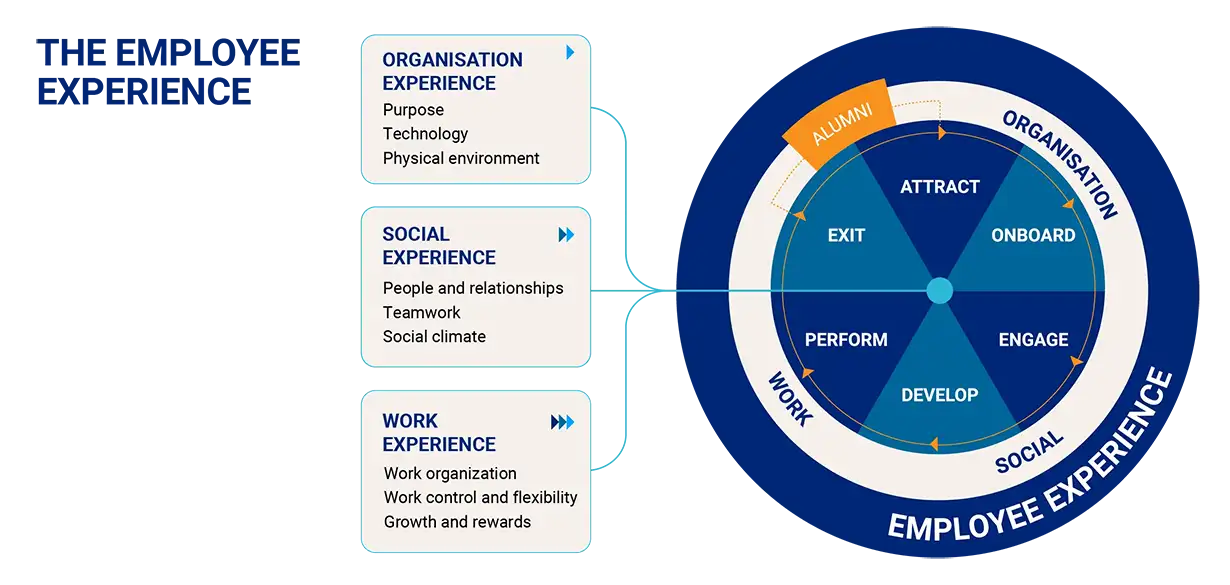Article: 1 - Employee experience (EX): Your introduction to employee experience

How to improve yours
What is employee experience?
- Attraction – the initial stage of when a potential employee discovers a role that interests them and makes the decision whether they’d like to apply.
- Onboarding – when employees receive the tech, training and orientation required to start their new roles.
- Engagement – how businesses work with their employees, the behaviours and skills demonstrated, and interpersonal relationships are built.
- Development – the learning and development pathways, both formal and informal, that are offered for employees to grow professionally.
- Performance – how and when conversations around an individual’s performance are offered and their achievements are recognised.
- Exiting – why an employee decides to leave an organisation and the processes around them leaving such as exit interviews.
- Alumni – a program to keep ongoing relationships with former employees.
11 actions to improve employee experience
Create a culture of recognition
Diversity, Equity and Inclusion:
Employee autonomy
Employee development
Wellbeing benefits
Mission, vision, values and purpose
Office space
Organisational transparency
Performance, growth and learning
Workplace policies
Alumni programs
Finding success
Search for candidates
Management issues
How to decide who gets a pay rise
Manage the performance of contingent workers
The core skills you need in your talent strategy
Tips for creating a strategic vision
Why you need a succession plan
Diversity, equity, and inclusion activities
Diversity, equity and inclusion
Top tips for creating a strategic vision
Build Agile NZ working environments
Mitigating co-employment risks
Leading people through volatile times
Upskilling for an AI Future report
How to reenergise a tired team
Why is organisational purpose important and how can you define it?
Top tips for managing your multi-generational workforce
Managing your contingent workforce
Your introduction to employee experience
Equality, diversity & inclusion
How to onboard & induct new staff
Are we letting down middle-managers?
Do we need a right to disconnect at work?
How to conduct a performance review
Talent management for on-demand staff
The secret to talent management planning
Whose responsibility is upskilling?
How to offer career progression
Pros and cons of salary transparency


